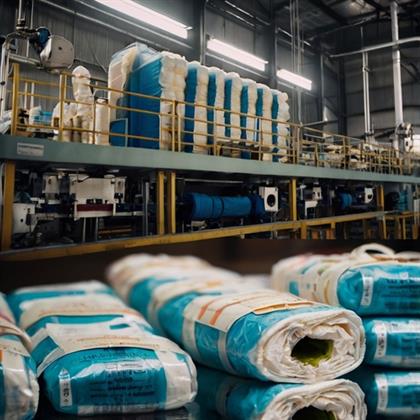
The packaging market is poised for significant transformations by 2031, driven by technological advancements, evolving consumer preferences, and increased environmental awareness. As companies strive to meet the demands of sustainability and efficiency, the industry is expected to witness remarkable innovations that will reshape its landscape.

Sustainable Packaging Solutions
One of the most significant trends influencing the packaging market is the shift towards sustainable packaging solutions. By 2031, the industry is anticipated to adopt eco-friendly materials such as biodegradable plastics, compostable films, and recyclable packaging. Companies are investing heavily in research and development to create packaging that reduces environmental impact while maintaining functionality and durability. The adoption of renewable resources and the reduction of single-use plastics will be paramount in achieving sustainability goals.
Brands are also exploring innovative ways to minimize packaging waste. This includes designing packaging that requires fewer materials, implementing refillable containers, and encouraging consumers to return used packaging for recycling. The focus on the circular economy will drive collaboration between manufacturers, retailers, and consumers to create a closed-loop system that reduces waste and promotes resource efficiency.
Smart Packaging Technologies
The integration of smart technologies into packaging is another game-changer for the packaging market. By 2031, smart packaging is expected to revolutionize the way products are packaged, tracked, and interacted with. RFID tags, QR codes, and NFC technology will enable real-time tracking of products throughout the supply chain, enhancing transparency and reducing the risk of counterfeiting.
Furthermore, smart packaging will provide consumers with interactive and personalized experiences. Augmented reality (AR) features on packaging will allow customers to access detailed product information, usage instructions, and even promotional content through their smartphones. This not only enhances the consumer experience but also strengthens brand loyalty.
E-commerce and Packaging Innovations
The rapid growth of e-commerce has significantly impacted the packaging market. By 2031, the industry will continue to evolve to meet the demands of online shopping. E-commerce packaging will prioritize convenience, durability, and protection to ensure that products reach consumers in perfect condition.
One notable trend is the development of frustration-free packaging. This type of packaging is designed to be easy to open and reduces unnecessary materials, enhancing the unboxing experience for consumers. Additionally, e-commerce packaging will incorporate smart features to streamline the return process, making it more efficient and user-friendly.
The rise of subscription services and direct-to-consumer models will also drive packaging innovations. Companies will invest in creating packaging that reflects their brand identity while ensuring that it is sustainable and cost-effective. Customization and personalization will play a crucial role in differentiating brands in a competitive market.
Regulatory and Compliance Changes
As the packaging market evolves, regulatory and compliance requirements will become more stringent. Governments and regulatory bodies worldwide are increasingly focusing on reducing plastic waste and promoting sustainable packaging practices. By 2031, it is expected that new regulations will mandate the use of eco-friendly materials and the implementation of recycling programs.
Packaging manufacturers will need to stay ahead of these changes by proactively adopting sustainable practices and ensuring compliance with evolving regulations. This will require continuous innovation and collaboration with stakeholders across the supply chain to meet the requirements while maintaining product quality and safety.
Conclusion
The packaging market in 2031 will be characterized by significant advancements in sustainability, smart technologies, and e-commerce-driven innovations. Companies that prioritize eco-friendly solutions, integrate smart features, and adapt to changing consumer preferences will be well-positioned to thrive in this dynamic industry. As regulatory and compliance landscapes evolve, the commitment to sustainability and resource efficiency will drive the future of packaging, shaping a more responsible and innovative market for years to come.
Leave a Reply
You Might Like Also

Forecasting the Future of the Adult Diaper Market 2031

The Future of Advertising: In-Game Advertising Market 2031

The Future of the Wireless Charging Market by 2031

The Future of the Portable Generator Market 2031













